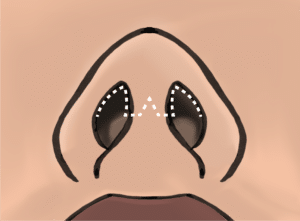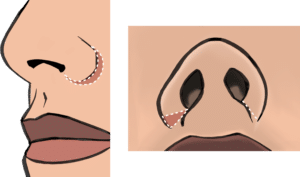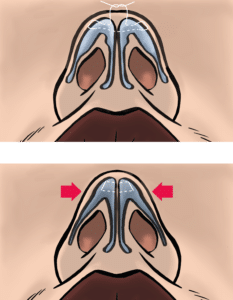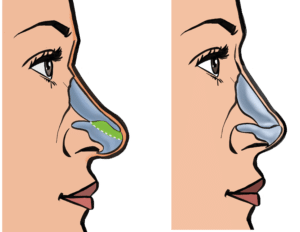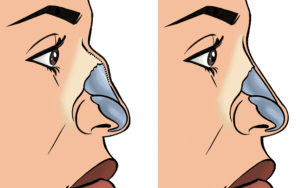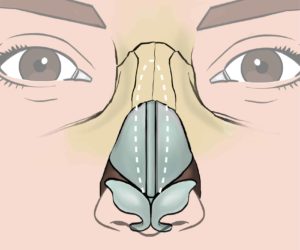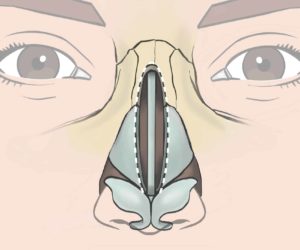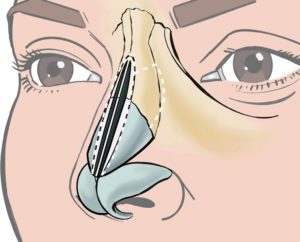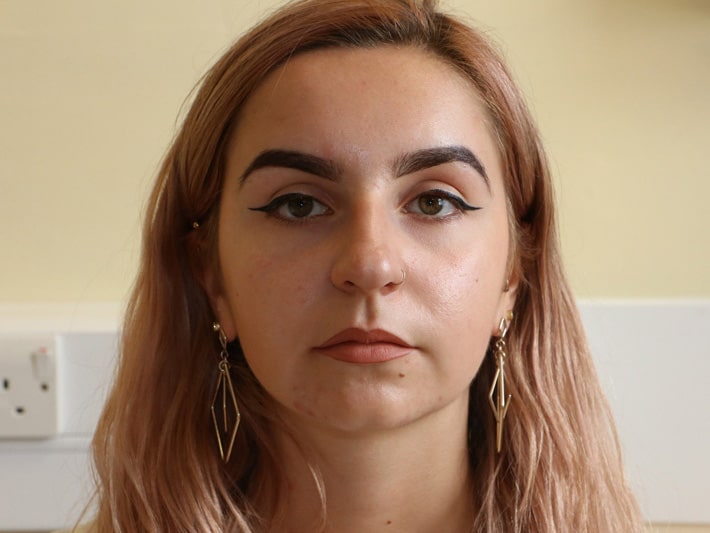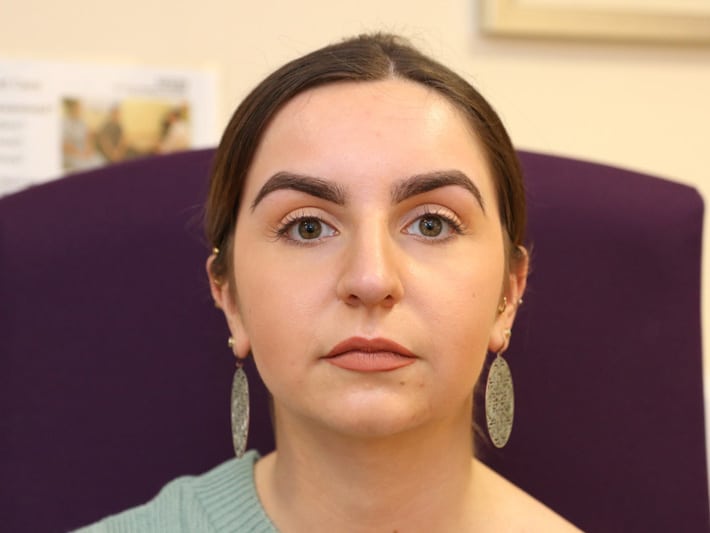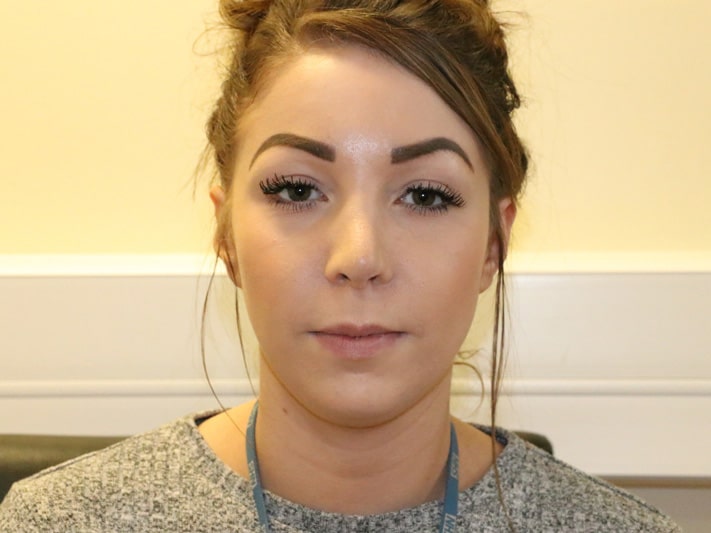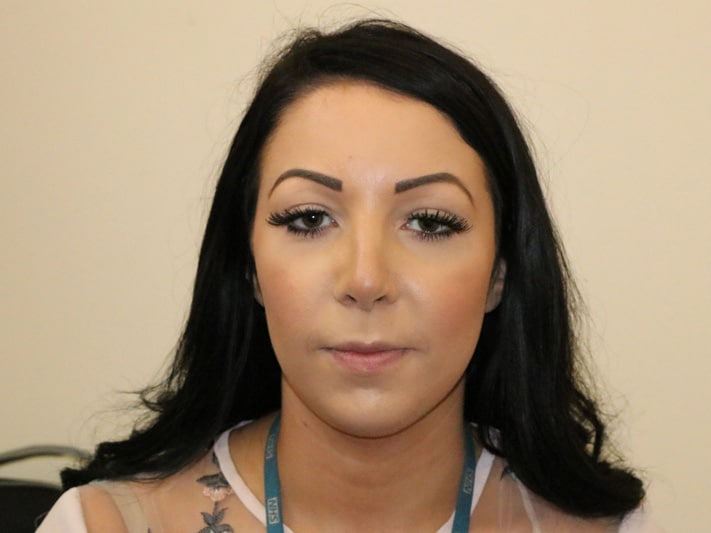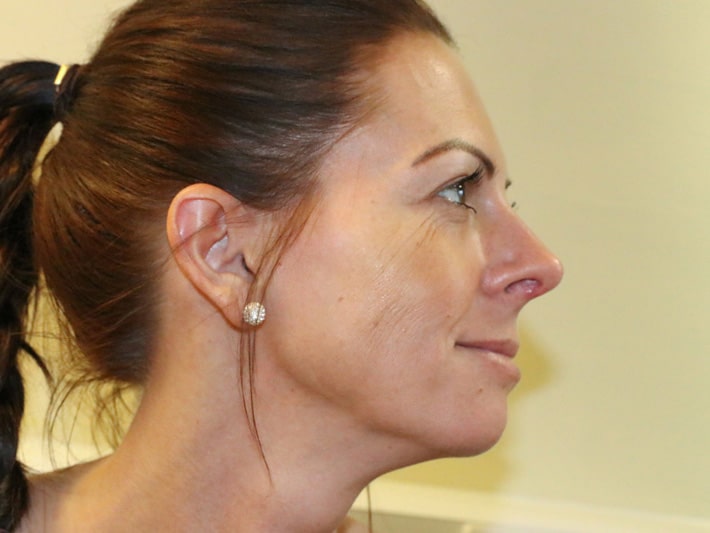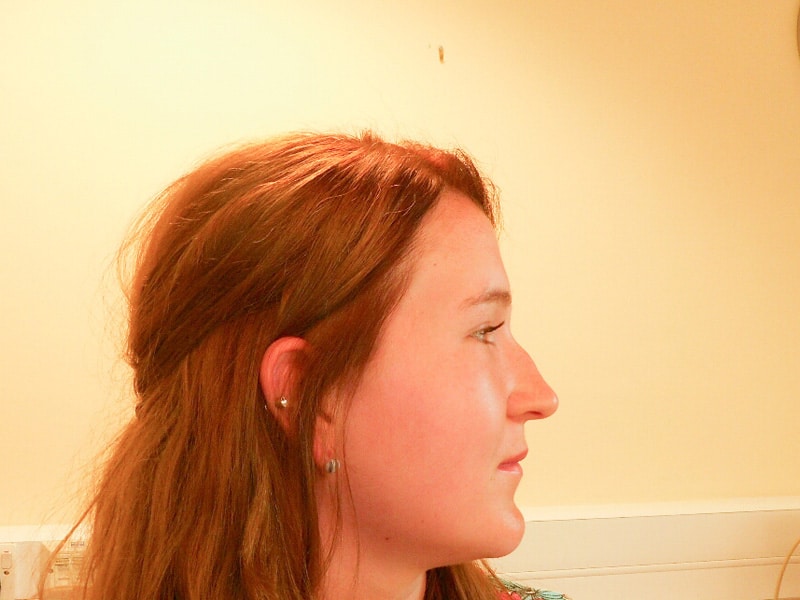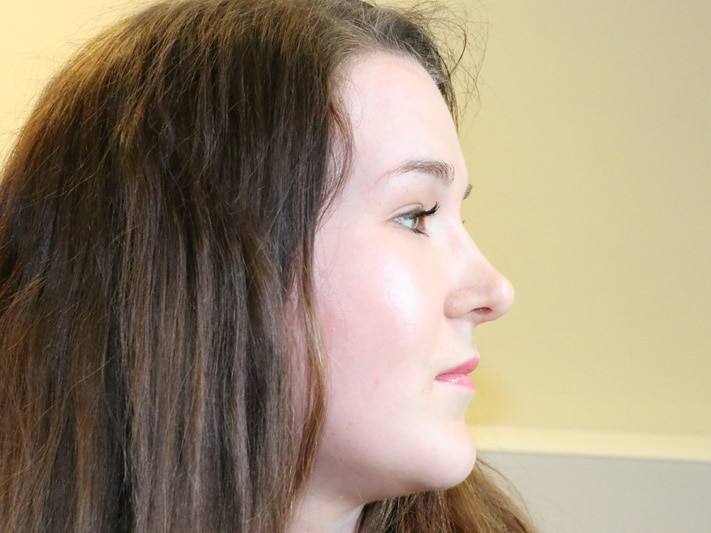|
Procedure
|
The nose shape can cause aesthetic concerns for a variety of reasons. These include a hump on the bridge of the nose, a bulbous or droopy tip, asymmetry, flared or wide nostrils, a small (=underprojecting) or large (=overprojecting) nose and a low columella amongst others. There can be associated breathing problems. A small chin makes a nose look larger and vice versa. In some cases, chin alterations may be beneficial.
A rhinoplasty (=nose job) corrects aesthetics of the outer nose. A septoplasty reshapes the midline cartilage of the nose to improve breathing or appearance. A septorhinoplasty addresses aesthetic as well as functional issues.
For functional problems such as breathing difficulty or frequent nose bleeds, an ENT opinion should be sought first.
Whenever a rhinoplasty is possible through a closed (scars inside the nostrils) approach, this will be preferred but for more difficult cases an open approach (scars inside the nostrils and across the columella between them) can be necessary. An open approach allows better control during surgery but leaves a small scar with a longer period of swelling.
After dorsal hump removal, the side walls of the bony bridge are also broken (=infracture) to narrow the dorsum or the entire nose. The bones are cut with a chisel inside the nose and through small cuts in the skin or alternatively a fine power tool (=piezotome) is used. The septal cartilage below is also reduced in height. The side cartilages (=upper lateral cartilages) can be fixed so that airflow is improved (=spreader flaps).
The tip is reshaped by cartilage trimming (=cephalic trim of the lower lateral cartilages), and with dissolving sutures to define the tip (=intradomal sutures) and to narrow it (=interdomal sutures).
An alarplasty narrows the nostrils and / or reduces flaring. This involves additional scars at the sill and / or in the crease of the nostrils.
Cartilage grafts are sometimes used for structural support or augmentation (=enhancement). These can be taken from the septum, ears or ribs. A softer graft can be taken from the superficial temporal fascia.
The sutures are hidden under the skin or inside the nostrils and do not require removal. They dissolve within four months. The nose is usually splinted for one week on the outside with a plastic splint and inside the nostrils with dissolving splints.
|
|
Scars
|
Within the nostrils (closed rhinoplasty) and chevron or “V”–shaped across the base (open rhinoplasty) and minute scars on the side of the nose. For nostril corrections (=alarplasty), the scars are in the outer creases (=alar creases) and / or in the sill of the nostril.
|
|
Operation time
|
2.5 hours
|
|
Anaesthesia
|
General for septum or bony surgery. Local for tip and nostrils
|
|
Hospital Stay
|
Day Surgery > (Overnight)
|
|
Benefits
|
Aesthetic, Psychological, Functional, Symptomatic
|
|
Risks
|
Bleeding, Infection, Scar problems (stretched, thick, abnormal pigmentation, red, retracted etc.), Skin discoloration, Wound separation, Slough, Pain, Nerve injury (Numbness), Non- animated nose, Bruising, Swelling, Overcorrection (e.g. saddle nose), Undercorrection, Polly beak deformity, Asymmetry, Inability to correct asymmetry, Aesthetic imperfections, With cartilage grafts: Graft failure & Donor morbidity of septum, ears, ribs [pneumothorax, mediastinitis]), Organ injury, Injury to tear duct / lining of skull, Loss of smell / taste, Breathing difficulty, Hump recurrence, Extrusion of bone / grafts / stitches, Septal perforation, Contour irregularities, Need for further surgery, Allergic reaction, Toxic Shock Syndrome, (General anaesthetic: Chest infection, Heart attack, Stroke, Blood clots in legs & lungs). N.B. Most complications are unlikely. Serious risks or death are rare
|
|
Risk factors
|
Smoking / contraception / flights within 6 weeks of surgery, overweight, high blood pressure, bleeding tendency (Stop herbal products or supplements for two weeks before surgery), diabetes
|
|
Optimising factors
|
Diet rich in Vitamin C and protein, plenty of fluids, fresh air, manual lymphatic drainage, massage, nasal exercises and taping as directed by the surgeon, protection from sun and trauma
|
|
Discomfort
|
1 - 2 weeks
|
|
Bruising
|
2 - 3 weeks
|
|
Recovery
|
Light activities 2 weeks, Driving 1 - 2 weeks, Physical work and sports 6 weeks, Unrestricted 3 months
|
|
Acceptable appearance
|
3 - 8 weeks for most patients (This is subjective)
|
|
Final result
|
18 - 36 months
|
|
Alternatives
|
No Surgery, Make-up, Fillers
|
